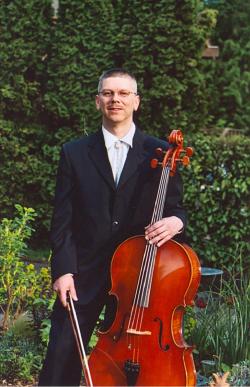
Due to changing needs and technologies, the SMT Executive Board has decided to retire SMT Discuss (effective Nov. 9, 2021). Posts will be preserved for archival purposes, but new posts and replies are no longer permitted.
carsonics
About
- Username
- carsonics
- Joined
- Visits
- 272
- Last Active
- Roles
- Guest
- First Name
- Carson
- Last Name
- Farley
- Affliation or Location
- University of Washington Alumnus
- Research Interests
- composition, theory, history
- Website
- www.carsonicsproductions.com
Comments
-
Music is best - Frank Zappa
-
Ewell is wrong. Beethoven was, is, will always be one of the great composers - race has nothing to do with it. How many works has Ewell composed that are performed for centuries by the world's greatest classical artists - if that's white supremecy…
-
Have you considered looking at the interval vectors of pitch class sets?
-
I might add that Mathieu's "Harmonic Experience" is specifically related to the harmonic series since harmonic overtones are specifically diagramed in the lattice charts he uses.
-
Thanks everyone for the responses and information. I have ordered a Tonnetz chart that I can investigate more closely in a completed form. It seems that the Tonnetz chart is related to "tonal" music specifically given the structure of triadic geom…
-
Tonality has to do with choice of consonant and dissonant frequencies organized as referential melodic/harmonic identity recognizable and comprehensible by various world cultures.
-
I'm not familiar with the musical references you are referring to, but have composed and explored "pandiationic" techniques. An interesting idea is to use more than one tonal center simulateously as the basis for harmony, counterpoint, progressions…
-
It would be valuable to show non musician students how to access musical resources available to general audiences that facilitate a better understanding of musical topics. For example, internet theory sites like 12Tone, Rick Beato (which has a mult…
-
Wonderful Keith! Thankyou. Transpositional relationships, makes perfect sense and thank you for the clarification, focus, and examples.
-
Thanks Marcel, yes that is where I was heading next and that immediately occurred to me. I appreciate your sugggestion.
-
You can certainly look at the Neopolitan chord in historic or pedantic terms and the way it was used in the past, but certainly in 2018 there are other solutions and resolutions possible and what composer today would even think in those terms much l…
-
Hopefully theory and analysis are still for musicians who create and perform music. Regarding physics, sound is frequency, pitch, duration, timbre, and silence. The extent to which a composer or performer use interrelational elements of sound is d…
-
Hi Mike, I think you would be very interested in Isaac Malitz's work/model on this subject. He is a member of SMT and his model is called the "OMS" model.
-
You should stick up for your own perspective Dimitar. Why should teaching music theory involve conformity? What does art have to do with conformity in the first place? Only a third rate composer would conform to academic protocol anyway. The cade…
-
It has dawned on me that there may be some confusion about my original post on this topic. The cliché that "music is a universal language" was never my position or purpose in supporting for this post. My original intention was to state that music …
-
Dear Nicolas, thought provoking comments and points. I found this article of interest on anthropology and music I want to share with you. http://johnchernoff.com/Ideas_of_Culture_and_the_Challenge_of_Music.html Best, Carson
-
Thank you Stephen. I also use a list similar to yours when discussing music with students in a generalized manner. It allows us to have a conversation about music in a comprehensible investigative manner. Even my youngest students can identify ma…
-
Hi Dimitar, I think John's point is that the idea of the ascending descending melodic minor natural minor form is fairly well established in the literature and pedagogy as well. For instance if you go to imslp.org and search for "cello methods" you…
-
Hi Nicolas, yes I will be happy to provide you with some examples and dates as soon as I get to my library.
-
I will say that the "melodic minor" scale as represented by ascending melodic minor and descending natural minor form is a well established convention in the cello pedagogy and historical etude books (and I image the same is true for other string in…
SMT Discuss Manager: smtdiscuss@societymusictheory.org
